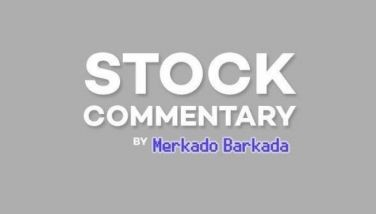Global financial meltdown exposes chinks in US armor

The world came closest to a financial system Armageddon on September 18, 2008, now called Black Wednesday, when markets were faced with the possible collapse of global insurance titan AIG, which followed on the heels of the sale of Merrill Lynch (America’s broker) and bankruptcy of Lehman Brothers, both the 3rd and 4th largest investment banks in the United States, bailout of mortgage giants Fannie Mae and Freddie Mac a few days earlier. The news triggered one of the worst stock plunge and credit seizures since the Great Depression of the 1930s, as banks refused and continue to refuse to lend even to one another, on fears of further bank collapses. Its occurrence exposed the fragility of the US financial system brought about by unfettered laissez-faire deregulation and policy flaws, including a prolonged period of multi-decade low interest rates and Reaganite free-market capitalism anchored on globalization, free trade and deregulation. The emperor is found without clothes and his castle built on a mountain of debt. The changed landscape of the US financial services sector and forthcoming reform measures will have profound consequences on the world.
Free market capitalism under fire
The now assailed Reaganite policy, continued in succeeding Republican and Democratic administrations, allows the weak and uncompetitive to fall or be absorbed in the name of productivity and competitiveness. These policies are made real in the transfer of US manufacturing know-how and capacity to lower cost countries such as China, resulting in a massive transfer of wealth and jobs to the rapidly developing economies. Free trade coupled with deflation from the newly integrated eastern countries into the global economy produced a tsunami of imported cheap goods to feed the insatiable appetite of US consumers that overwhelmed and decimated US manufacturers. Consumption now constitutes two thirds of the US economy. Critics charge that America has become a nation of burger flippers and box-store sales clerks with low paying jobs, inadequate health benefits and low-income growth.
Structural imbalances
A source of instability is the structure of US trade and fiscal policies that results in massive and intractable imbalances. The external trade stubbornly incurs shortfalls that have grown to $800 billion a year. Inclusive of services, the deficit is still $700 billion. Its tax structure is incapable of generating sufficient revenue to cover its massive expenditures and $400 billion a year debt service. In 2008, the projected fiscal shortfall is estimated at $481 billion, excluding the cost of guaranteeing $29 billion in Bear Stearns risk, $85 Billion in bridge loans to AIG, $200 billion to effectively nationalize Fannie Mae and Freddie Mac, plus up to $700 billion to buy illiquid mortgage assets from US financial institutions to unclog credit markets.
Massive transfer of wealth
The twin fiscal and trade deficits have resulted in a massive transfer of wealth from the US to the rest of the world, particularly Asia that is unprecedented in history. Many poor nations have grown rich. China alone has amassed almost $2 trillion in foreign exchange reserves, which it in turn uses to purchase US Treasury bills and bonds the US government issues to fund its funding shortfalls. As a result, the US has become the most heavily indebted country in the world, with a projected $11.8 trillion in public debts. This insatiable need for funding and the willingness of foreign governments with large current account surpluses to supply the US with credit has created imbalances such as record low interest rates that create asset bubbles and stoke inflation, disequilibrium in currency exchange rates, and tension in financial markets and friction with major trading partners of the US. China in particular is under regular pressure to revalue its currency. Providing massive funds to the US diverts resources needed to finance growth in poor countries.
Sensitivity to interest rate movements
The heavy debt load of Americans and reliance on credit has rendered US consumers extremely sensitive to any diminution in their income such as from inflation, taxes and high interest rates. As a result, the US Fed routinely uses monetary tools to regulate the economy and control inflation. The record 40-year low interest rates instituted by Fed chairman Alan Greenspan over a prolonged period after the stock market bubble burst in March 2000, led to uncharacteristically risky behavior by homeowners and financial institutions. This produced a massive housing bubble. The subsequent steep rise in rates burst the bubble in late 2005, producing the toxic mortgage securities and their derivatives that is the primary cause of the massive losses of financial institutions throughout the world, including some Philippine banks.
Recovery hopes dashed by inflation
Inflation reared its ugly head after energy prices spiked up to unseen highs from May to June 2008 and sent a chill on already hard pressed consumers. After the capital markets had shown optimistic signs of being at an inflection point in April, hopes were dashed for an earlier recovery in the housing market and the economy. This development soured the prospect of stability in the prices of mortgage securities. The losses in the financial sector deepened and the meltdown followed in September.
Deregulation and consequences
Due in large part to deregulation, regulators did not put a check to the increasingly reckless behavior of lenders and US homebuyers. The Clinton era Gramm-Leach Biley Act of 1999 repealed the stringent regulations imposed by the Glass-Steagall Act enacted in 1993, after the stock market crashed in 1929, to prevent speculation and safeguard depositors’ funds. Self-regulation allowed mortgage loan originators to adopt imprudent lending practices such as “No Money Down” or “No Income Verification”. Financial services deregulation provided the environment for financial product innovation to package mortgages into increasingly complex financial products and derivatives such as collateralized debt obligations (CDOs) and credit default swaps (CDS) that were developed and traded over-the-counter, Unfettered, US banks established offshore special investment vehicles (SIVs) outside their balance sheet to purchase debt securities until the massive losses forced the banks to absorb them. The unregulated and opaque market in credit default swaps (CDS) reached an astounding $50 trillion and brought the near downfall of an otherwise sound insurance titan AIG. Wall Street firms like the failed Bear Stearns and Lehman Brothers massively leveraged up their balance sheets by buying these securities and funding the purchases with short-term loans that evaporated when counterpart financial institutions balked at lending them more money. This magnified losses when the value of the securities collapsed.
Influence of lobbyists
A weakness in the US legislative process is the influence lobbyists exert on Capitol Hill. The US Congress was repeatedly warned of systemic risk posed by excessive exposure of the undercapitalized government sponsored enterprises (GSE). Despite the warnings, legislators did not exercise the political will to rein in the largest housing GSEs, Fannie Mae and Freddie Mac, and instead raised the loan limit to enable the GSEs to purchase more mortgages until they owned or securitized over 50 percent of outstanding residential mortgages. Reports have it that legislators received large sums donated by registered lobbyists working for the GSEs and implied that this may have been a factor for legislators’ failure to control the GSEs. But it is also clear that doing so would have deprived low-income constituents from the opportunity to buy their home, a prospect that would affect the political fortune of legislators. By Sept. 7, the two debt bloated GSEs were tottering into bankruptcy and the US government was forced to take control with a $200-billion bailout.
Pendulum to the opposite
The crisis, including the staggering $700 billion cost of the latest rescue plan, find US politicians and the public heatedly engaged in the blame game. They are looking for the culprit who was “asleep at the switch”, and examining the policies responsible for their dire straits. Given the dark mood of Americans and a new US administration a few months away, the prospect of reforms looms large in the horizon; some of these may have profound effects on the rest of the world.
The growing chorus to “keep jobs at home” may lead to more protectionist policies, which may cause governments from China and Southeast Asia to further de-emphasize export oriented growth models and rely instead on domestic consumption and intra-region trade to fuel economic growth.
It is also possible to envision further changes in the financial landscape, to the detriment of the primacy of the United States. Already, Goldman Sachs and Morgan Stanley have changed their business models into bank holding companies, accepting US Federal Reserve oversight and lower leverage; while European and Asian financial institutions purchase the remains of Lehman Brothers. The increase in risk aversion and the de-leveraging of financial institution balance sheets will make capital funds harder to source; unless emerging market financial institutions and capital markets mature to provide the needed funds for economic growth and development. At the same time, the recent events in global capital markets may accelerate diversification away from US dollar assets as the reserve currency of choice. All this may signal the end of the US’s dominance as the world’s economic and financial powerhouse.
(The author, a certified public accountant, is a property developer and former chairman and president of the Subdivision and Housing Developers Association (SHDA, member of the Management Association of the Phils. (MAP) and Financial Executives of the Phils. (FINEX) ). He presented an analysis of the 1997 Asian Financial Crisis at a forum by the Human Development Network on Nov. 4, 1998; published “A Tax-less Economic Growth” on Oct. 22, 2004, an analysis of the principal cause of the drastic decline in fiscal revenues that was cited by the Asian Development Bank in its 2004 Philippine Yearend Economic Review and “Is the Economy Overtaxed” on Dec. 1, 2004; featured in “Financial Analyst Proposes Novel Fiscal Measures” on Sept. 30, 2005,”The 1997 Asian Financial Crisis and 10th Anniversary Market Crashes, April 2007, “The Panic of 2007”, Sept. 3, 2007, in The Philippine STAR. Signs of Market Inflection Point after Flirting with Financial Armageddon, April 30, 2008, Phil. STAR and the quarterly July 4, 2008 issue of Zurich based International Association of Financial Executives Institute.] For comments: [email protected]
- Latest
- Trending






























